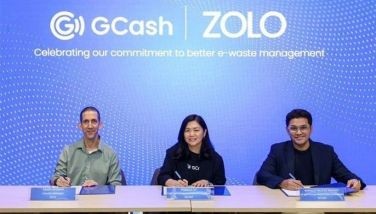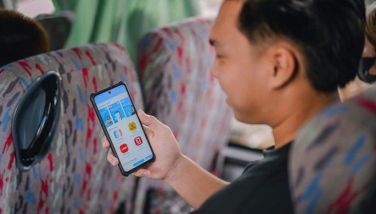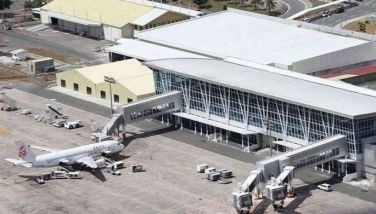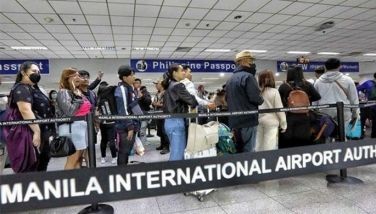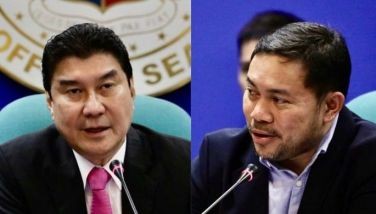DBP forest program: Turning green for sustainable economic development
January 3, 2006 | 12:00am
The DBP Forest, the environment-friendly lending program of the Development Bank of the Philippines (DBP), has already initiated 17 projects in just nine months from its inception.
The DBP Forest program was launched in April 2005 to support and encourage the forestation of open and denuded areas through the planting of relatively high value fruit trees and other useful plant species.
DBP president and chief executive officer Reynaldo G. David said the DBP Forest Program was launched in consonance with the government’s call to preserve the environment and to step up reforestation efforts not only to prevent further loss of lives and property, but to preserve livelihood and the overall economic strength of the country.
"This is an important project that is truly close to the heart of DBP as a bank for sustainable development. Through this initiative, we are starting in our own little way and literally planting the seeds for a sustainable future," he added.
David further explained that with an initial seed fund of P50 million from the Kreditanstalt fur Wiederaufbau (KfW) of Germany, the program would contribute to the protection of coastal areas and the conservation of soil and water in the uplands, while improving spawning grounds for terrestrial and marine aquatic life.
In the long run, it assists in the development of downstream industries in the countryside. Tapped as forest partners are state universities and colleges, local government units (LGUs), and people’s organizations (POs). They are awarded community-based forest management (CBFM) agreements.
The CBFM is a program of the Department of Environment and Natural Resources (DENR) which empowers forest occupants to develop and manage forest lands for a period of 25 years, renewable for another 25 years.
DBP also works with other government agencies such as the National Irrigation Administration (NIA), National Power Corp. (Napocor), Bureau of Fisheries and Aquatic Resources (BFAR), Protected Areas and Wildlife Bureau (PAWB), Department of Science and Technology (DOST), and the Department of Trade and Industry (DTI).
Initial investment through funding support for the purchase of planting stocks and administrative and maintenance expenses is provided by DBP. By partnering with POs, farmers and fishermen in beneficiary communities are encouraged to be directly involved with and to share in the benefits of the forest projects. These community-based groups handle actual planting and cultivation, site preparation, and other necessary forest/plantation activities.
In close coordination with DBP, partner agencies and firms are tasked to provide the technical expertise, prepare a planting and maintenance plan, and conduct regular monitoring and progress reporting in the site preparation and project implementation activities.
DBP Forest sites reached 17 DBP with several identified sites in the pipeline. Some of the cultivating "forests" are located in Abucay, Bataan; Alabel, Sarangani; Marilog District, Davao City; Talakag, Bukidnon; Puerto Princesa, Palawan; Cagayan Province; Quezon Province; and Guimaras.
The first DBP Forest project is located in Abucay, Bataan. The bank tied up with the local government and two POs in undertaking two reforestation initiatives covering a total of 20 hectares of mangrove areas in Barangay Mabatang. These POs are the Kinikilalang Mangingisda ng Mabatang, Inc. (KIMAMA) and the Balikatan ng mga Mangingisda para sa Bakawanan, Inc. (BAMABA).
In Alabel, Sarangani, the second forest project was launched in collaboration with the provincial government, the municipality of Alabel, and a community-based group. The project involves the reforestation and rehabilitation of a 100-hectare upland area located within the Calminda Watershed area at Barangay Paraiso, Alabel, Sarangani province.
In Marilog District, Davao City, DBP spearheaded the development of two forest projects totaling 550 hectares, in cooperation with two POs with the support of the DENR and the local government of Davao City. As an expression of gratitude, the two POs committed to plant three more high value fruit and forest trees for every tree that DBP is funding. Thus, in addition to the 550 hectares being funded by DBP, another 1,650 hectares will be planted at the POs’ initiatives.
The development of the fourth – and biggest – forest project is now being undertaken in San Isidro, Talakag in Bukidnon Province with three POs as forest partners.
The project involves the long-term development of a 2,000-hectare rubber tree plantation that is expected to contribute in the rebuilding of the Philippine natural latex industry. The first community rubber plantation in the country, the project is expected to benefit 829 families in the area by encouraging rural livelihood activities.
The project also marks the bank’s first partnership with a private firm – the Japan-Philippines Latex Technology Inc. – for the provision of the technical expertise and financial resources for project development, including the development and implementation of skills development programs in financial management, quality control, and other necessary skills in rubber plantation operations and management.
In Palawan, the DBP tapped the Palawan Council for Sustainable Development (PCSD) and the Palawan State University (PSU) in launching two reforestation initiatives as key projects that will support Palawan’s development thrusts and priorities as an ecotourism zone.
In Cagayan Province, two forest projects involves the planting of high value fruit and forest trees such as mango, pomelo, mandarin, cashew, guyabano, narra and mahogany. In partnership with the Cagayan State University (CSU), DBP initiated efforts for the reforestation of a 151-hectare forest site within the CSU Lal-lo Campus in Sta. Maria, Cagayan. Meanwhile, the development of a 172-hectare fruit and forest area in Gattaran, Cagayan focuses on a reforestation initiative of DBP and the provincial government of Cagayan.
Meanwhile, the devastation caused by flooding and landslides in the towns of Real, Infanta and General Nakar prompted the DBP to launch two projects involving the reforestation of an 80-hectare mangrove plantation in Barangay Binulasan, Infanta and a 130-hectare forest rehabilitation project in the 384-hectare Real-Infanta watershed. Partners are the local government units of Real and Infanta and two people’s organizations.
In Guimaras, a 26.46-hectare mangrove reforestation project has been initiated in cooperation with the provincial government. The forest site is located in Barangay Panobolon, Nueva Valencia.
The West Visayas State University was tapped as a partner for the development of a 500-hectare forest site in Lambunao, Iloilo. The forest area is now being planted to high value fruit and forest trees such as durian, rambutan, lanzones, pomelo, and mangosteen.
Other collaborative undertakings are being worked out in specific target areas in Northern Luzon, Central Luzon, Southern Luzon, Negros Island, the Davao Area, Cebu, and Northern Mindanao. The establishment of tree parks to counter pollution in highly-urbanized areas is also being considered another priority focus under the DBP Forest Program. – Ted Torres
The DBP Forest program was launched in April 2005 to support and encourage the forestation of open and denuded areas through the planting of relatively high value fruit trees and other useful plant species.
DBP president and chief executive officer Reynaldo G. David said the DBP Forest Program was launched in consonance with the government’s call to preserve the environment and to step up reforestation efforts not only to prevent further loss of lives and property, but to preserve livelihood and the overall economic strength of the country.
"This is an important project that is truly close to the heart of DBP as a bank for sustainable development. Through this initiative, we are starting in our own little way and literally planting the seeds for a sustainable future," he added.
David further explained that with an initial seed fund of P50 million from the Kreditanstalt fur Wiederaufbau (KfW) of Germany, the program would contribute to the protection of coastal areas and the conservation of soil and water in the uplands, while improving spawning grounds for terrestrial and marine aquatic life.
In the long run, it assists in the development of downstream industries in the countryside. Tapped as forest partners are state universities and colleges, local government units (LGUs), and people’s organizations (POs). They are awarded community-based forest management (CBFM) agreements.
The CBFM is a program of the Department of Environment and Natural Resources (DENR) which empowers forest occupants to develop and manage forest lands for a period of 25 years, renewable for another 25 years.
DBP also works with other government agencies such as the National Irrigation Administration (NIA), National Power Corp. (Napocor), Bureau of Fisheries and Aquatic Resources (BFAR), Protected Areas and Wildlife Bureau (PAWB), Department of Science and Technology (DOST), and the Department of Trade and Industry (DTI).
Initial investment through funding support for the purchase of planting stocks and administrative and maintenance expenses is provided by DBP. By partnering with POs, farmers and fishermen in beneficiary communities are encouraged to be directly involved with and to share in the benefits of the forest projects. These community-based groups handle actual planting and cultivation, site preparation, and other necessary forest/plantation activities.
In close coordination with DBP, partner agencies and firms are tasked to provide the technical expertise, prepare a planting and maintenance plan, and conduct regular monitoring and progress reporting in the site preparation and project implementation activities.
DBP Forest sites reached 17 DBP with several identified sites in the pipeline. Some of the cultivating "forests" are located in Abucay, Bataan; Alabel, Sarangani; Marilog District, Davao City; Talakag, Bukidnon; Puerto Princesa, Palawan; Cagayan Province; Quezon Province; and Guimaras.
The first DBP Forest project is located in Abucay, Bataan. The bank tied up with the local government and two POs in undertaking two reforestation initiatives covering a total of 20 hectares of mangrove areas in Barangay Mabatang. These POs are the Kinikilalang Mangingisda ng Mabatang, Inc. (KIMAMA) and the Balikatan ng mga Mangingisda para sa Bakawanan, Inc. (BAMABA).
In Alabel, Sarangani, the second forest project was launched in collaboration with the provincial government, the municipality of Alabel, and a community-based group. The project involves the reforestation and rehabilitation of a 100-hectare upland area located within the Calminda Watershed area at Barangay Paraiso, Alabel, Sarangani province.
In Marilog District, Davao City, DBP spearheaded the development of two forest projects totaling 550 hectares, in cooperation with two POs with the support of the DENR and the local government of Davao City. As an expression of gratitude, the two POs committed to plant three more high value fruit and forest trees for every tree that DBP is funding. Thus, in addition to the 550 hectares being funded by DBP, another 1,650 hectares will be planted at the POs’ initiatives.
The development of the fourth – and biggest – forest project is now being undertaken in San Isidro, Talakag in Bukidnon Province with three POs as forest partners.
The project involves the long-term development of a 2,000-hectare rubber tree plantation that is expected to contribute in the rebuilding of the Philippine natural latex industry. The first community rubber plantation in the country, the project is expected to benefit 829 families in the area by encouraging rural livelihood activities.
The project also marks the bank’s first partnership with a private firm – the Japan-Philippines Latex Technology Inc. – for the provision of the technical expertise and financial resources for project development, including the development and implementation of skills development programs in financial management, quality control, and other necessary skills in rubber plantation operations and management.
In Palawan, the DBP tapped the Palawan Council for Sustainable Development (PCSD) and the Palawan State University (PSU) in launching two reforestation initiatives as key projects that will support Palawan’s development thrusts and priorities as an ecotourism zone.
In Cagayan Province, two forest projects involves the planting of high value fruit and forest trees such as mango, pomelo, mandarin, cashew, guyabano, narra and mahogany. In partnership with the Cagayan State University (CSU), DBP initiated efforts for the reforestation of a 151-hectare forest site within the CSU Lal-lo Campus in Sta. Maria, Cagayan. Meanwhile, the development of a 172-hectare fruit and forest area in Gattaran, Cagayan focuses on a reforestation initiative of DBP and the provincial government of Cagayan.
Meanwhile, the devastation caused by flooding and landslides in the towns of Real, Infanta and General Nakar prompted the DBP to launch two projects involving the reforestation of an 80-hectare mangrove plantation in Barangay Binulasan, Infanta and a 130-hectare forest rehabilitation project in the 384-hectare Real-Infanta watershed. Partners are the local government units of Real and Infanta and two people’s organizations.
In Guimaras, a 26.46-hectare mangrove reforestation project has been initiated in cooperation with the provincial government. The forest site is located in Barangay Panobolon, Nueva Valencia.
The West Visayas State University was tapped as a partner for the development of a 500-hectare forest site in Lambunao, Iloilo. The forest area is now being planted to high value fruit and forest trees such as durian, rambutan, lanzones, pomelo, and mangosteen.
Other collaborative undertakings are being worked out in specific target areas in Northern Luzon, Central Luzon, Southern Luzon, Negros Island, the Davao Area, Cebu, and Northern Mindanao. The establishment of tree parks to counter pollution in highly-urbanized areas is also being considered another priority focus under the DBP Forest Program. – Ted Torres
BrandSpace Articles
<
>
- Latest
Latest
Latest
December 22, 2024 - 10:14am
December 22, 2024 - 10:14am
December 17, 2024 - 10:00am
December 17, 2024 - 10:00am
December 13, 2024 - 12:19pm
December 13, 2024 - 12:19pm
December 4, 2024 - 4:05pm
December 4, 2024 - 4:05pm
November 25, 2024 - 9:35am
November 25, 2024 - 9:35am
Recommended






















